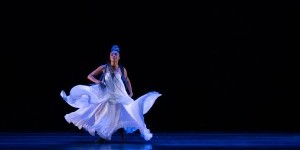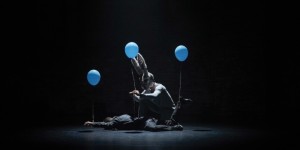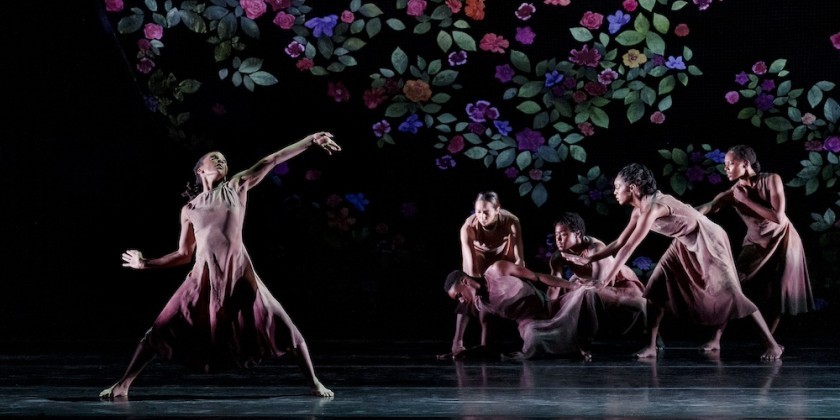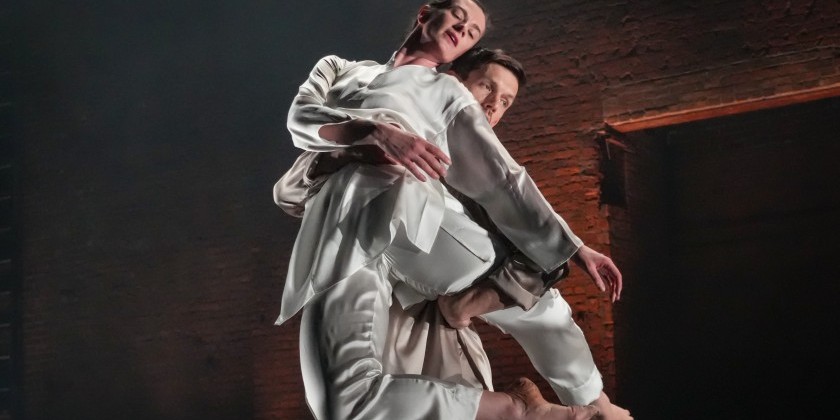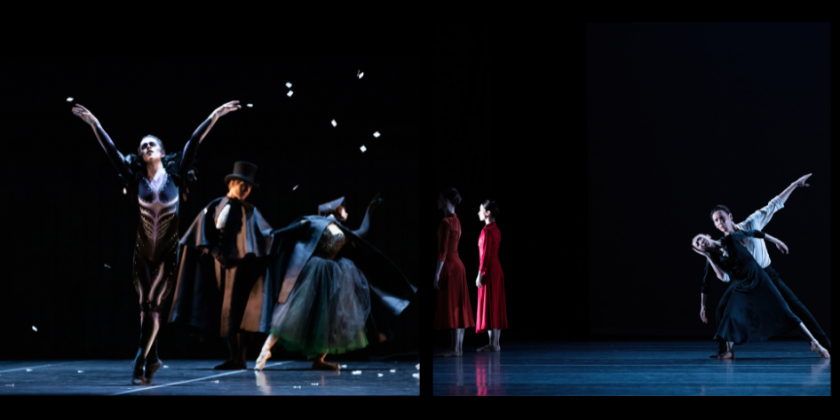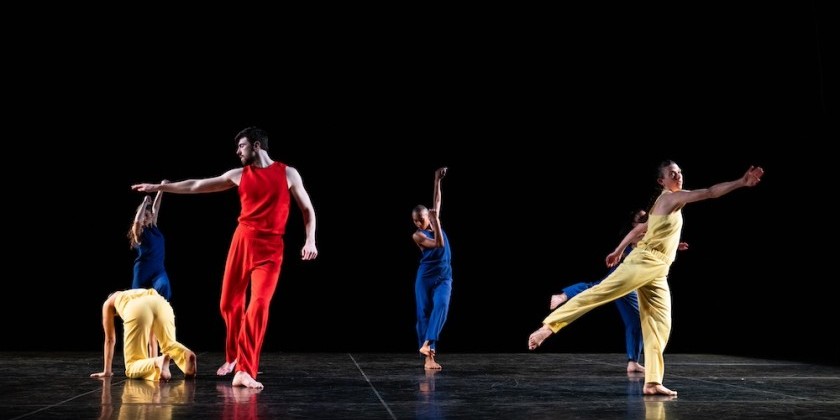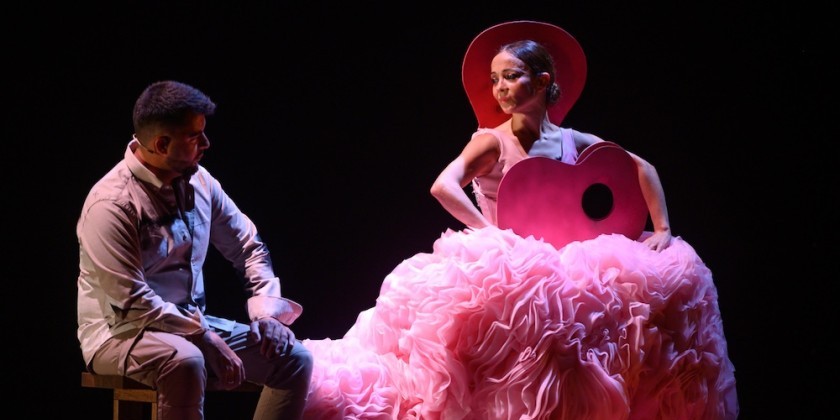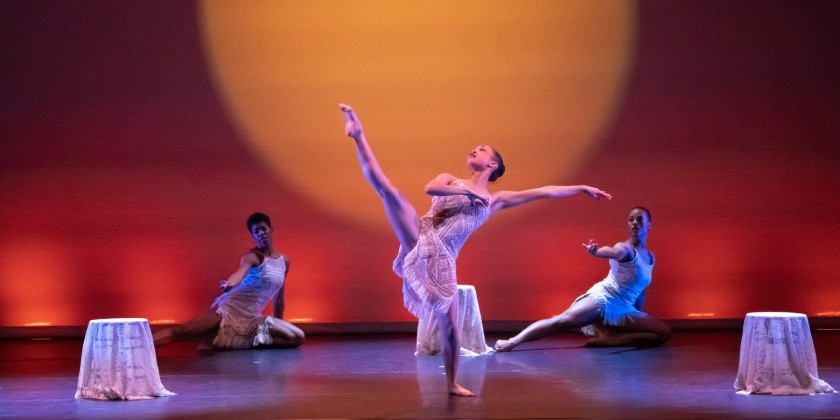IMPRESSIONS: Ronald K. Brown's EVIDENCE: A Dance Company at The Joyce Theater
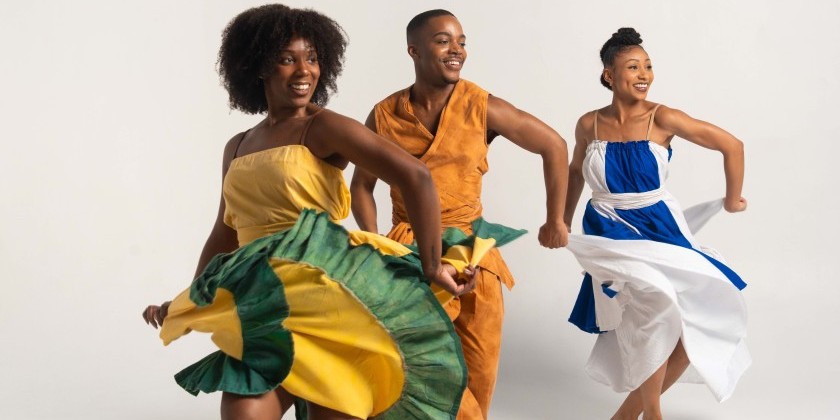
Artistic director: Ronald K. Brown // Associate artistic director: Arcell Cabuag
Walking Out the Dark
Choreography & Text: Ronald K. Brown // Music: Philip Hamilton, Sweet Honey in the Rock, Cutumba Ballet Folklórico de Santiago de Cuba // Musician: Abou Camara, drummer
Costume design: Carolyn Meckha Cherry & Omotayo Wunmi Olaiya // Original lighting design: Brenda Gray
Lighting re-creation: Tsubasa Kamei
Torch
Choreography: Ronald K. Brown // Music: Teddy Douglas & DJ Zinhie featuring Busiswa Gqulu, mixed by RKB
Costume design: Keiko Voltaire // Lighting design: Clifton Taylor // Lighting re-creation: Tsubasa Kamei
Dancers: Demetrius Burns, Arcell Cabuag, Stephanie Chronopoulos, Austin Warren Coates, Joyce Edwards, Gregory Hamilton, Isaiah K. Harvey, Valériane Louisy (guest artist), Shaylin D. Watson
At the start of Walking Out the Dark, which opened a terrific program by Evidence: a Dance Company at The Joyce Theater on January 17, 2024, four dancers stand quietly in separate corners with their heads bowed, waiting for the signal to start. The arrangement could not be simpler. Yet choreographer Ronald K. Brown is a man of spiritual depths, with a serious attitude to life. When his dancers step forward in pairs to address each other, their gestural dialog has a cosmic dimension.
Walking Out the Dark, a piece from 2001 which combines dance and poetry with music by various artists, meditates on life’s challenges within the framework of the Regla de Ocha, a religion of the African diaspora. Whether Austin Warren Coates and Shaylin D. Watson are lovers or family members; whether Stephanie Chronopoulos and Valériane Louisy are sisters or friends, the stage is a crossroads where they have come to struggle not just with another person, but also with their destinies.
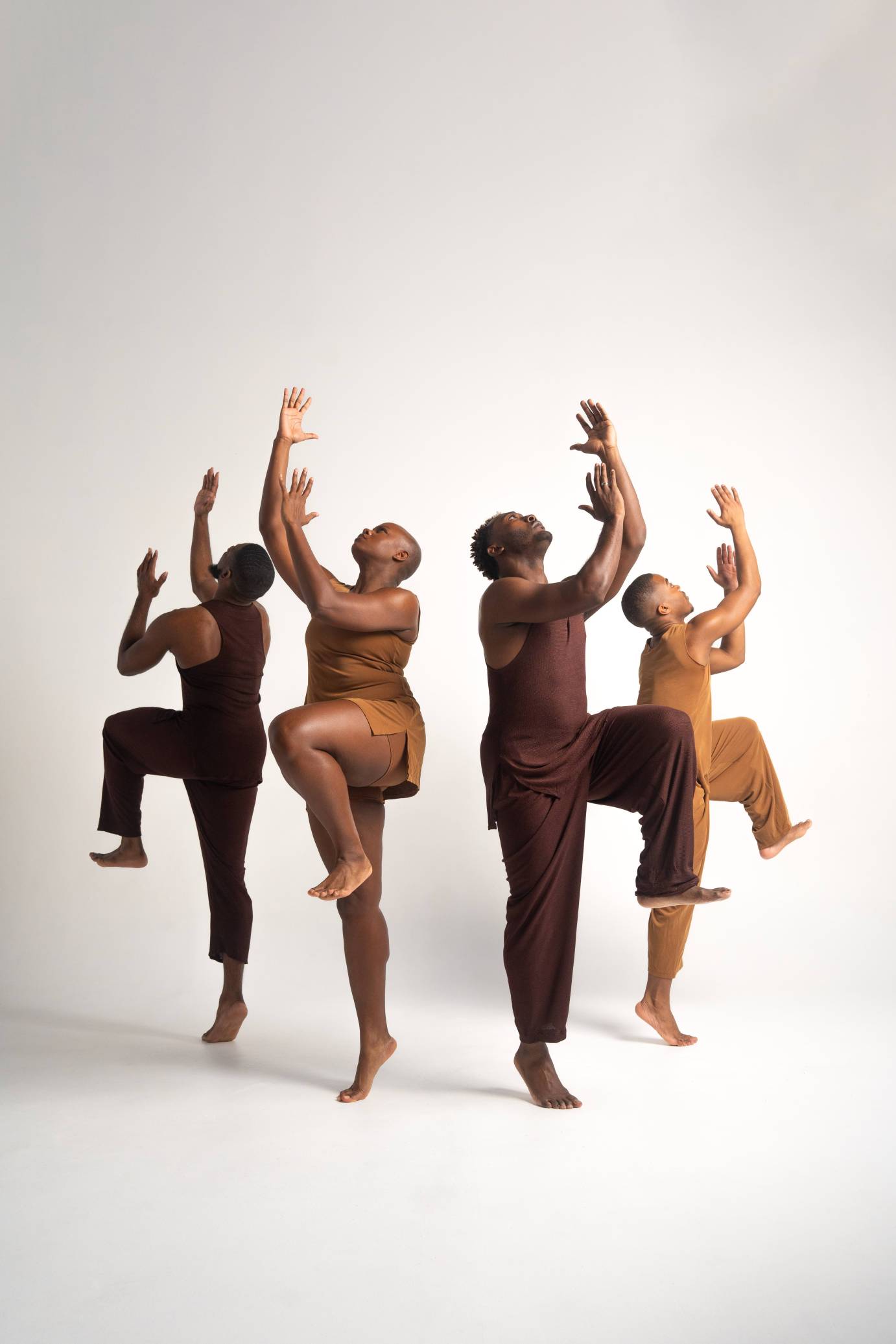
In the first dialog, Watson turns and sinks, interrogating Coates with open hands and a quizzical posture. She comes close enough to fold him in a wide embrace without touching him. When his turn comes, he offers to take her hand but then turns sharply away. He leaps at her, and bows down before her pleading with his arms softly extended. When Coates and Watson return to their corners, Louisy dances toward Chronopoulos, her figure loose and snaky, and Chronopoulos responds with an excited but evasive solo. The attempt to communicate exhausts these characters, and they lie flat on their backs, overcome. A second round brings them closer to communion as they are able to mirror and echo one another’s moves. Yet this attempt fails, too, as Coates and Louisy raise their hands in gestures of dismissal.
A dramatic break of some kind is needed to overcome their resistance; and it comes as all four dancers lie prone, a shower of dirt raining down on them in a symbolic burial. Though the characters seem to have hit bottom, their ordeal is not over. The next scene shows them rising shakily, crossing their arms over their chests, and shuffling bent over holding the back of their legs. Rebirth does not come easily, and when we heart the chant of a Cuban Santera our thoughts turn to initiation.
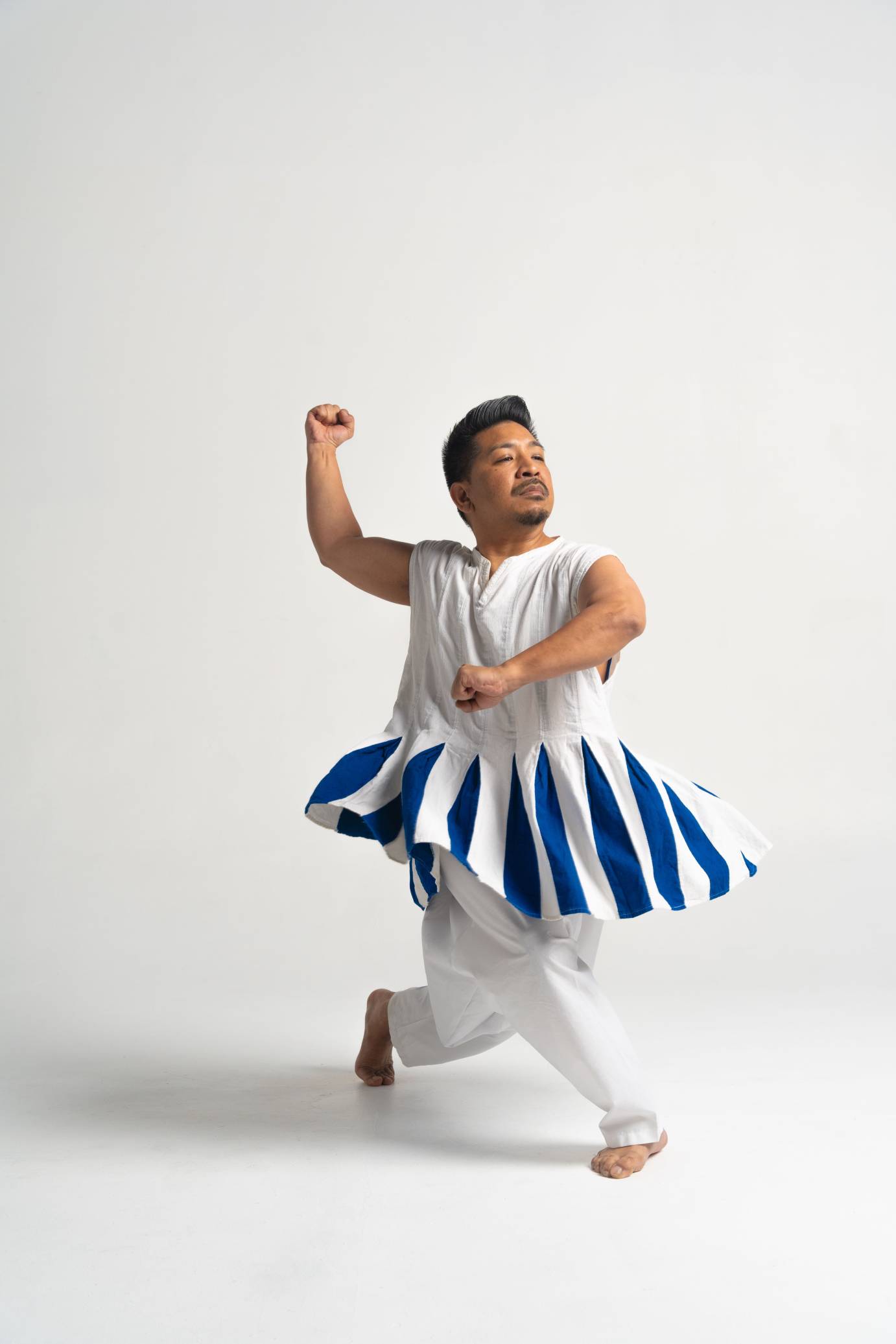
Another break brings Brown himself on stage to read a poem of thanks addressed to those brothers and sisters who have helped him escape from cycles of destruction, and in whose company he has enjoyed “loving, laughing, and wishing the ghosts were here.” A reference to the Yoruba goddess Oshun hints at what is to come. When the dancers return, the women wear colors associated with the orishas of the Yoruba pantheon---blue and white for Yemaya; red and white for Shango; and green and yellow for Orula. The mood turns joyful, the movement curving and pulsing to infectious rhythms. When two dancers face off now, they can communicate without any suggestion of bruised egos and unfulfilled desires. A spirit of community has quenched the tragic loneliness of the opening scenes, and banished anomie.
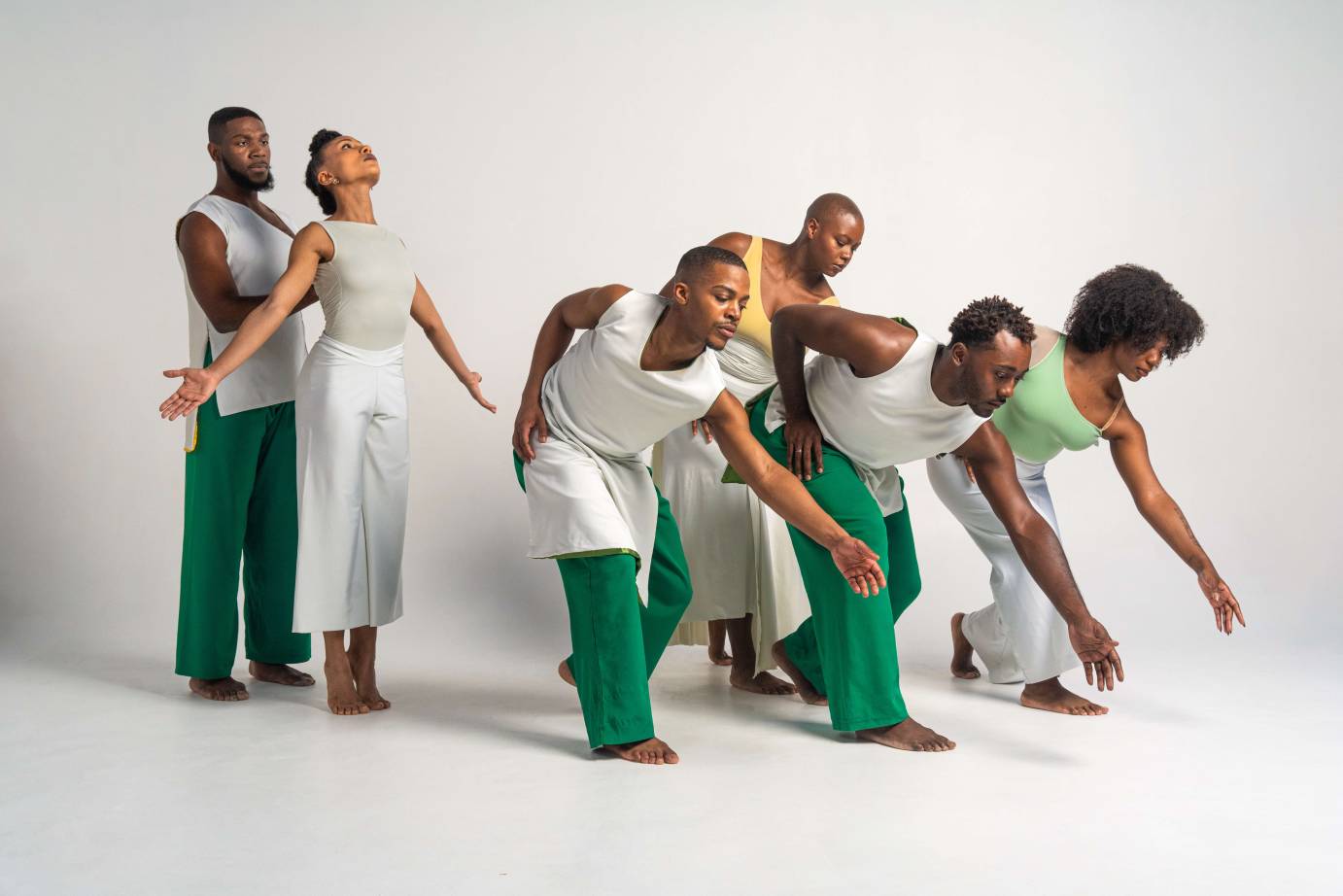
Walking Out the Dark might have ended there, but Brown has not finished giving thanks for this life-saving transformation. He brings djembe drummer Abou Camara on-stage to rouse the audience; and Demetrius Burns emerges to perform a dance that echoes the sentiments of Brown’s monologue, darting forward and back in profile, flinging his arms to the side as he leaps, and prostrating himself before the drummer. Then the quartet of dancers returns one more time, dressed in red, to show off their hard-won unity. It’s an upbeat ending, but also a fantasy. Such seamless unison is only thrilling in a dance, where it suggests the potential for human cooperation; no one would want to live that way.
Torch (2012), the full-company work that follows intermission, has enough luscious dancing to make it a joyous, program-closer, with opportunities for everyone to show off including Joyce Edwards, Gregory Hamilton, and Isaiah K. Harvey. Yet this piece, too, has its thread of world-weariness, and images of anguish, as Brown explains in the post-performance Q&A that he was motivated to choreograph it in remembrance of friends who succumbed to cancer.
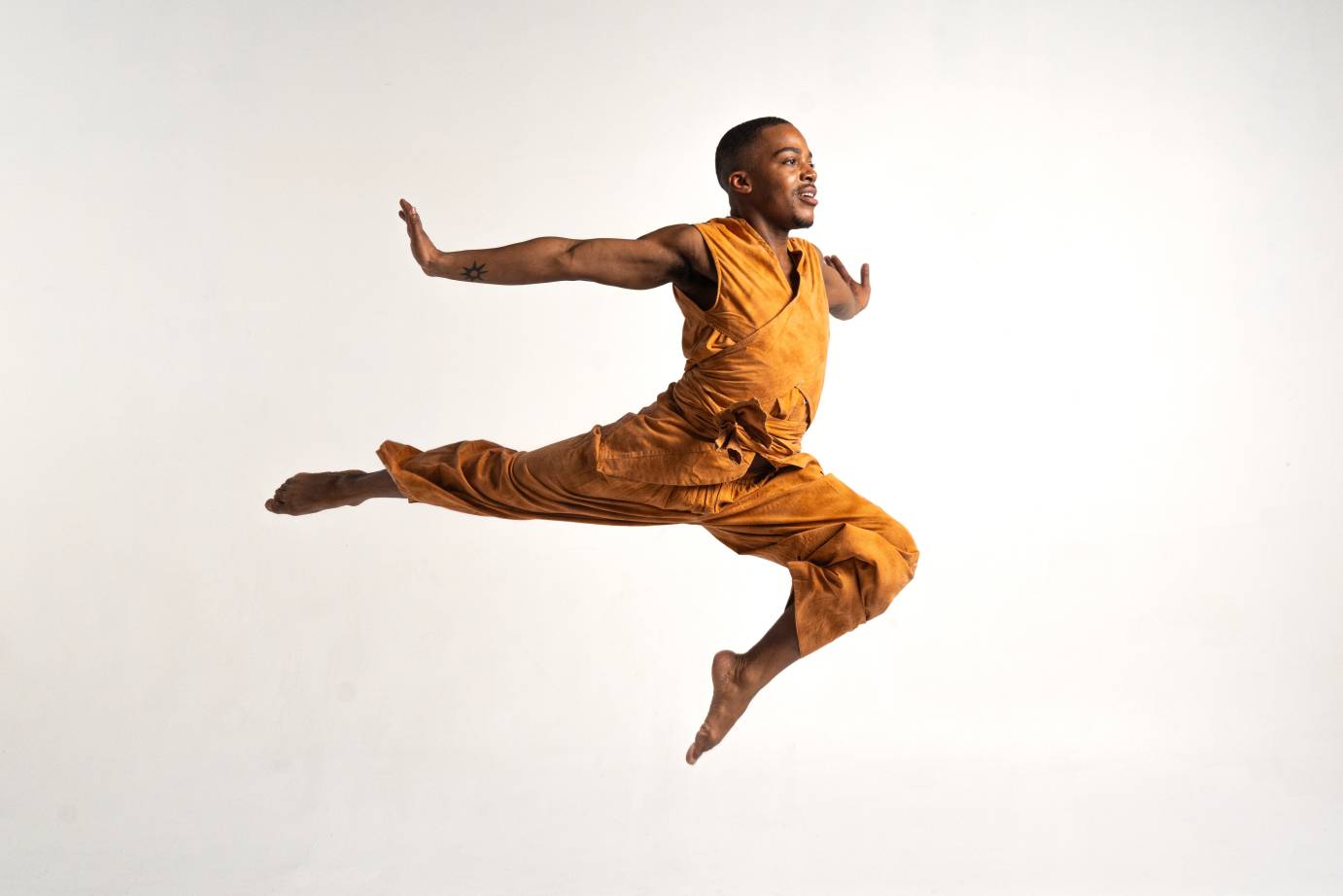
Amid the broad and airy composition, Louisy becomes the moving focus. Standing on a man’s shoulders and sheltered by the crowd when she falls off, she weakens and is borne off stage by Hamilton. Harvey shadows and pursues her, but she always manages to elude him. Louisy is there so she can disappear. In the end, however, Brown cleverly turns the tables leaving her alone on stage, a pensive figure contemplating her mortality.






